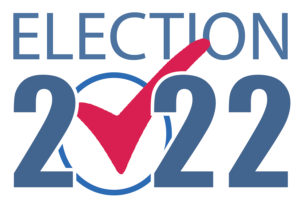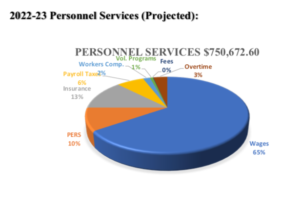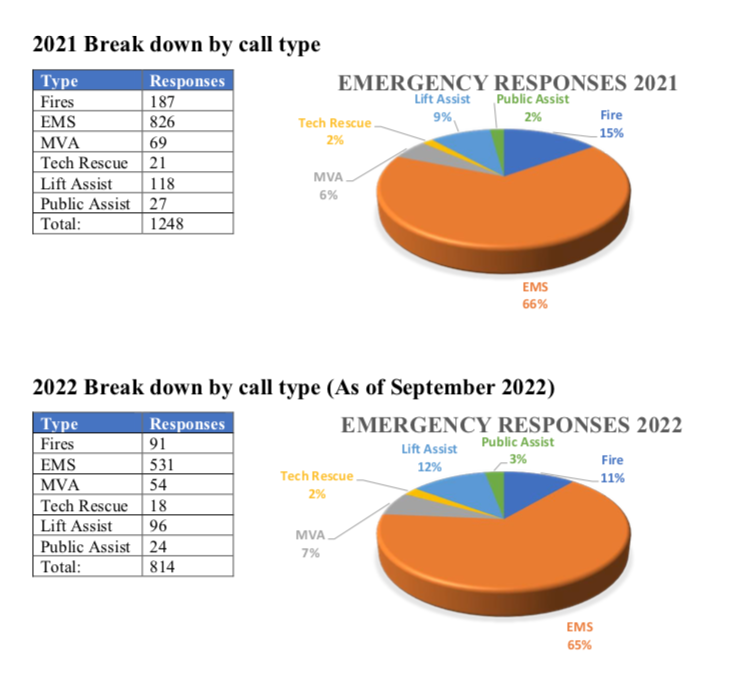By QUINTON SMITH/YachatsNews.com
WALDPORT – The Central Coast Fire & Rescue District is asking voters Nov. 8 to bump up a current tax levy by 10 cents in order to keep up with rising costs, continue replacing and upgrading equipment and raising pay for firefighters.

The proposed levy is for 35 cents per $1,000 assessed property value and is for five years. If approved, it would replace a 10-year 25 cent levy last approved in 2012 that was supposed to be exclusively for equipment.
Under the current levy, the owner of property assessed at $300,000 pays $75 a year in taxes. If voters approve the increase, the property owner’s tax bill would rise by $15 to $90 a year.
The levy, however, is one of three that provides funding for the fire district, which has an annual budget of $1.03 million. There is a tax base of 82 cents per $1,000 and an operating levy of $1.27 per $1,000 – for a total current rate of $2.34 per $1,000 assessed property value.
That means the owner of property assessed at $300,000 in the Central Coast district currently pays $702 a year for fire and emergency services. If the new levy is approved, it would take effect next year and raise that overall tax bill to $717.
If approved, the levy would raise an estimated $158,000 in fiscal 2023-24, gradually increasing to $178,500 by fiscal 2027-28.
Levy changes
The fire district’s five-member board voted to move away from a strict “equipment only” levy because it has vastly improved its fleet and firefighter equipment the past two years through purchases, trades and repairs. Instead of setting aside $100,000 a year for all types of equipment, Chief Jamie Mason says the district can now build up an adequate equipment reserve with $50,000 a year.

The district has approximately $200,000 in equipment reserve accounts, he said, which will be needed some day to purchase “new but used” fire engines that can run hundreds of thousands of dollars.
While the current levy helps pay for equipment purchases – everything from used fire trucks to hoses to personal protective equipment – the board said in its deliberations this year that the smaller levy increase is needed to keep up with rapidly rising costs of day-to-day operations.
The district responded to 1,248 calls in 2021 and 844 through the first nine months of this year.
The Central Coast board also wants to avoid the mistake made by the Yachats Rural Fire Protection District board, which had not requested a levy increase in 15 years and is now seeking approval of a $1.59 operating levy to replace an expiring 59 cent levy — a whopping $1 per $1,000 increase.
“We’re not bumping this up dramatically, but keeping it small to cover our increasing costs,” Mason said.
The district is also near the end of contract negotiations with the union representing its firefighters and the results of the vote could determine what type and sizes of raises district personnel would receive. Unlike other Lincoln County fire districts, COCF&R has had a stable firefighting force – something Mason wants to maintain.

“Our budget is stable, but I’m worried about losing firefighters to other agencies,” Mason said. “The levy plays a big part of that.”
Mason found money in last year’s and the current budget to hire two additional firefighters – it now has six — after a personnel and equipment-sharing agreement with the Seal Rock Fire District fell apart. For a while, COCF&R was responding on some shifts with just one firefighter, an unsafe and dangerous situation, Mason and firefighters argued. The board agreed and approved the two hires.
The district has also applied to a popular Federal Emergency Management Agency program that pays the salaries of two firefighters for three years. Its request totals $476,000 – or about $150,000 a year – money the district could shift to other costs, including an upcoming proposal to remodel the current station in downtown Waldport or help pay for new fire engines.
FEMA missed an October deadline for announcing the latest grant recipients in Oregon, but has awarded millions to agencies spread across the state the past two years.
While there is no organized opposition to the levy other than a smattering of comments on Facebook community pages, the request comes just as the latest property tax bills land in the mailbox to thousands of Lincoln County residents.
The district has undertaken an active outreach program to explain its levy request to voters. By law, it can only explain what the money would be used for – not urge a yes or no vote. Mason and board members held an open house Monday night to explain the request. It mailed a flyer to 3,300 voters the same day ballots were dropped in the mail, and the firefighters union and volunteer association are using social media to urge a “yes” vote.
“Everybody now understands what’s happening to costs. Everything is going up. People get it,” Mason said. “But we also understand the demographics of this district.”



